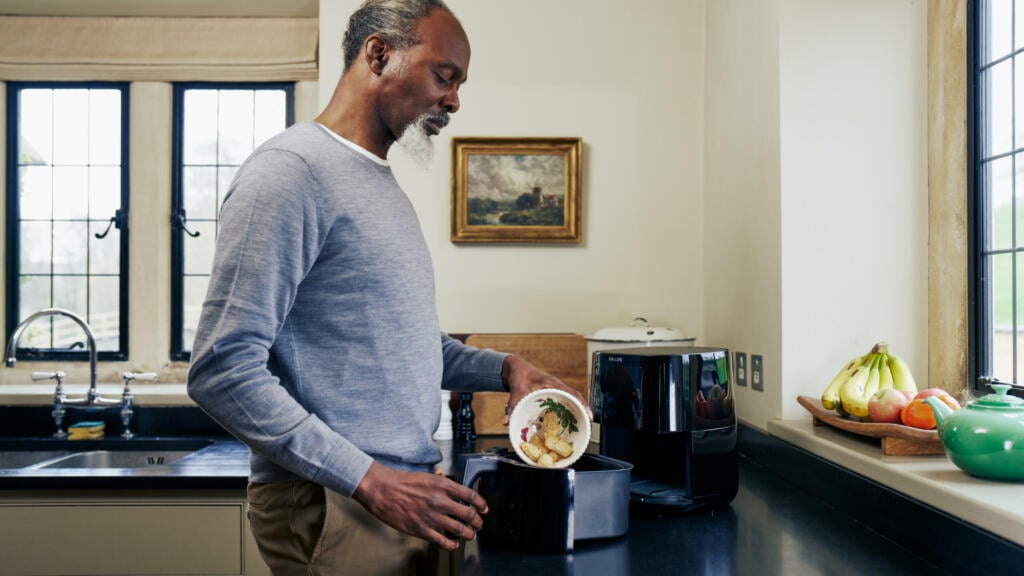
10 things you should never put in a dishwasher
Camilla Sharman
From chemical-free to shop-bought solutions, our (scale-free) cup runneth over.
Consuming limescale may not cause us physical harm, but my children will testify to the emotional impact it has when I discover the kettle’s not clean enough for a cuppa. Because scrabbling through the kitchen cupboard only to realise that the descaling solution has run out does not lend itself to a harmonious morning routine.
And while I’ve recently been converted to the amazing descaling powers of citric acid, there are other ways to descale a kettle and wave goodbye to this mineral menace, as we found out from the experts.
Here’s what they recommend.
Consuming limescale may not cause us physical harm, but my children will testify to the emotional impact it has when I discover the kettle’s not clean enough for a cuppa. Because scrabbling through the kitchen cupboard only to realise that the descaling solution has run out does not lend itself to a harmonious morning routine.
And while I’ve recently been converted to the amazing descaling powers of citric acid, there are other ways to descale a kettle and wave goodbye to this mineral menace, as we found out from the experts.
Here’s what they recommend.
 Credit: Shutterstock/FotoDuets
Credit: Shutterstock/FotoDuetsLimescale is primarily caused by calcium carbonate in our domestic water supply. Nigel Bearman, CEO at Daily Poppins explains just why limescale is an issue in our domestic zones. “In appliances that use water, such as kettles, coffee machines, dishwashers, and washing machines, limescale is a harmless white residue that accumulates over time,” explains Bearman.
 Credit: Shutterstock/FotoDuets
Credit: Shutterstock/FotoDuets“It poses a greater problem than just spoiling hot water beverages though, because it corrodes the components and shortens the lifespan of appliances.
“In addition,” he adds, “limescale deposits reduce the efficiency of a kettle, meaning that it takes longer to heat water, and therefore costs more to do so.”
A limescale-free kettle could save you more money than you realise and reduce the amount of energy we consume as a country.
The UK Tea & Infusions Association states that in the UK alone we drink 100 million cups of tea every day, with the British Coffee Association adding 98 million coffees to that grand total (read our tips on descaling a coffee machine here). When you also add on those occasions when you use the kettle to boil water for saucepans, it doesn’t take a mathematician to know that’s a lot of kilowatt hours impacting your energy bills and the environment.
And we‘ve all had the moments of smart meter anxiety, watching the numbers rise, so there’s no doubt that a reduced boil time makes for a more palatable cup of tea all round.
If you prefer a chemical-free approach, you’re in for a treat. Although there are specific descaling products available at most supermarkets, our trusty kitchen cupboard also houses several solutions.
According to Bearman and Henry Paterson, cleaning expert at Housekeep, white distilled vinegar is a firm favourite for cleaning a kettle
 Credit: Shutterstock/FotoHelin
Credit: Shutterstock/FotoHelinBearman explains how to use it:

How often should you descale your kettle?
Although it’s tempting to wait until you see nasty scum floating on the top of your tea, if you live in a hard water area, it’s better to keep a handle on your limescale levels rather than letting them build up.
Paterson says: “If you use it a lot, it’s worth descaling monthly to prevent buildup.”
It seems there are no limits to the benefits of bicarb and removing limescale is another of its powers. Bearman notes that if you have let the limescale build up, this is probably your weapon of choice.
 Credit: Shutterstock/Geo-grafika
Credit: Shutterstock/Geo-grafikaIt should only take one teaspoon of bicarb, and he recommends the following approach:
Has the limescale built up? Extra power may be needed
Extra stubborn stains that just won’t shift? Bearman says you can use bicarbonate of soda to make a paste. Mix a teaspoon of soda with a little water and stir it until thick. Using a toothbrush, scrub the inside of the kettle with the paste until the limescale is removed. Rinse out with cold water. Repeat the boil and rinse process two to three times to ensure all the residue is removed.
‘Oh, citric acid. How do I love you, let me count the ways.’
My newfound adoration of this unassuming product is no secret and it’s a mighty tool in the fight against limescale.
 Credit: Exceptional
Credit: ExceptionalI recently moved to a hard-water area, and after just five weeks, limescale was already rearing its ugly head in my new kettle. Being tasked with testing out a citric acid hack for work was life-changing. One application of the power and it was like magic. Limescale was banished, no underlying worry about ingesting chemicals from a shop-bought product, and my kettle was shining like new.
 Credit: Exceptional
Credit: ExceptionalIf you fancy trying it yourself, I followed the manufacturer’s instructions on the product I had purchased, but sure you read the instructions clearly before starting as some brands may be different.
I did the final step twice, just to make sure it was squeaky clean. The added benefit of citric acid? No smell at the end, which you’re likely to get if you use vinegar.
If you’re not sure how hard your water is, the DWI (Drinking Water Inspectorate) has a handy map showing how areas in England and Wales are affected in general. For more detailed information on your region, contact your local water supplier.
 Credit: DWI
Credit: DWIIf your cleaning supplies are low, you can always look to nature for a solution. It’s no surprise that lemons and citric acid share the same ability to take limescale down. So, if you’ve got a spare one hanging around and don’t need it for your G&T, Paterson shares his tips:
 Credit: Shutterstock/New Africa
Credit: Shutterstock/New AfricaTip
To reduce the amount of limescale that builds up, leave your kettle empty when it’s not in use so that water is not constantly in contact with the element.
Although we’d always prefer to promote a chemical-free approach, I’ll admit to using ready-made solutions in the past, both for convenience and the sheer satisfaction of seeing the product fizz merrily away as it eats up the limescale for breakfast.
If you feel this is your only option, then Paterson says: “Make sure that it’s designed specifically for kettles. Avoid industrial strength descalers, and as with any cleaning product, always check the label and follow the instructions carefully.
“Once you’ve descaled the kettle,” he adds, “thoroughly rinse it out a few times afterwards. Then fill the kettle, bring it to a boil, and pour out the water before you use it again.”
Personally, when using a ready-made product, I always feel it needs at least three goes at rinsing and boiling before I next use it, even though the manufacturers usually recommend doing this once or twice.
The other downside? As Bearman points out, “Some of them claim to remove limescale in just 10 minutes, but they are more expensive than natural methods.”
Paterson notes he’s had success with Scale Away Descaler if you want a quick fizzy fix.
Don’t be tempted by trending quick fixes
“There are a variety of internet solutions that seem to pop up from time to time,” warns Bearman, “including using fizzy drinks like Coca-Cola to restore the shine to your kettle.
“These approaches should always be taken with a grain of salt,” he says. “Although they may be able to remove some limescale, they may also damage your kettle and void your warranty.”

Written by Sarah Harley she/her
Published: Updated:
Since first picking up a paintbrush and experiencing the joy of re-decorating her bedroom in a questionable red, white and grey scheme as a young teenager, Sarah Harley was hooked on the world of interior design. This obsession even led to a real life ‘Grand Designs’ project in 2005 when she donned a pink hard hat and appeared on TV screens, project managing the renovation and extension of a Grade II listed 17th century Folly in South Wales.
Throughout her career, Sarah has gained an array of experience in several different roles, ranging from copywriting, PR, events management and photography to interior design and home staging. With her two passions being the written word and the joys of a beautifully designed home, Sarah’s mission is to open the door on the world of interiors, inviting readers in to help them work their way through the vast choice of products, ideas and trends so that their own homes can reach their full potential.

Camilla Sharman

Jayne Cherrington-Cook

Emily Peck

Camilla Sharman